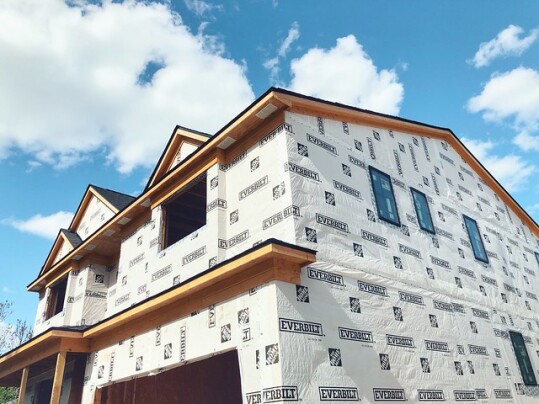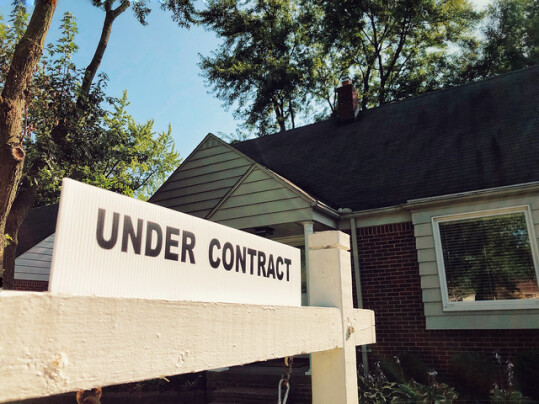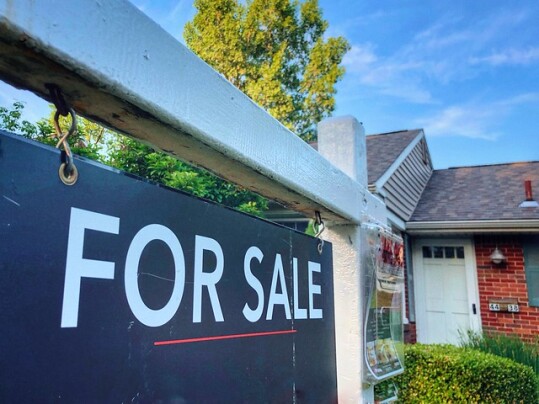According to the Mortgage Bankers Association’s Weekly Applications Survey, average mortgage rates fell last week for 30-year fixed-rate loans with both conforming and jumbo balances. Loans backed by the Federal Housing Administration and 15-year fixed-rate loans were mostly flat from the week before. Declining rates led to a bump in mortgage demand which increased 0.7 percent, with refinance activity rising 2 percent week-over-week. Joel Kan, MBA’s associate vice president of economic and industry forecasting, says demand from home buyers, while up slightly from the week before, has slowed this spring. “Overall purchase activity has weakened in recent months due to the quick jump in mortgage rates, high home prices, and growing economic uncertainty,” Kan said. But while demand may be slowing, it may also be helping slow price increases. The report shows the average purchase loan amount fell to $413,500 last week, down from $460,000 in March, its all-time high. The MBA’s weekly survey has been conducted since 1990 and covers 75 percent of all retail residential mortgage applications. (source)
Archive for June 2022
Mortgage Rates, Average Loan Size Both Fall
New Home Supply Hits 14-Year High
The low supply of homes for sale has been the housing market’s primary issue for years now. That’s why an unexpectedly positive report from the U.S. Census Bureau and the Department of Housing and Urban Development is an encouraging sign for home buyers. The report shows the inventory of new homes for sale in May was at a 14-year high, with a 7.7-month supply available at the current sales pace. That’s good news for home shoppers, since a growing inventory of available new homes is the fastest way to balance the market. It not only provides buyers with more houses to choose from, but also helps relieve upward pressure on prices. Of course, the number of homes for sale is still much lower than it needs to be, but the recent gains may be a sign that the housing market is trending toward better balance and fewer home price spikes. Also in the report, new home sales increased 10.7 percent in May from the month before. The improvements were unexpected, with economists polled prior to the release predicting sales would fall month over month. (source)
Contract Signings Rise After 6-Month Slide
The National Association of Realtors’ Pending Home Sales Index measures the number of contracts to buy homes signed each month. The index is considered a good future indicator for the housing market, since signings proceed closings by several weeks and can reliably predict future home sales numbers. In May, pending sales were up for the first time in six months, with an increase of 0.7 percent. Lawrence Yun, NAR’s chief economist, says sales activity is still lagging behind last year’s pace. “Despite the small gain in pending sales from the prior month, the housing market is clearly undergoing a transition,” Yun said. “Contract signings are down sizably from a year ago because of much higher mortgage rates.” But while higher rates have slowed some buyers, how much of an effect they’ve had depends on where you look. For example, pending sales in the West – where homes are most expensive – declined in May, while contracts to buy surged 15.4 percent in the Northeast. (source)
Home Buyer Affordability Stable In May
For home buyers, affordability is always a top concern. That’s why news of home price increases and rising mortgage rates has some buyers feeling hesitant about their home purchase plans. But while affordability conditions have certainly changed from last year, one new measure of monthly mortgage payments found they were relatively flat in May. The data, from the Mortgage Bankers Association’s monthly Purchase Applications Payment Index, measures median payments across the country based on recent loan applications. In May, the index found mortgage payments were only $8 higher than they were in April. In fact, the median payment was $1,897 in May and $1,889 the month before. The increase was even smaller when looking at lower-payment mortgages, which increased to $1,241 from $1,236. Of course, whether or not affordability conditions continue to remain stable in the months ahead remains to be seen. But after the sharp increases we saw during the first four months of the year, a relatively stable May is a welcome break for buyers. (source)
The Most Popular Photos In Home Listings
These days, most buyers start their home search online. In fact, according to one analysis, 97 percent of recent home buyers used the internet while shopping for a house. That means almost everyone searching for a house is looking at photos of listings before heading out to see available homes in person. That makes photography an important part of the home buying process. Good photos will help sellers attract buyers, while also helping buyers narrow their search down to the homes that best fit their needs. So what are the most popular photos in real estate listings? To find out, a new study looked at more than 14,000 photos of a randomly selected 600 properties for sale in early June. The study found bedroom photos were the most popular in listings. More than one in 10 listing photos were of bedrooms. Kitchens were a close second, with the living room, bathroom, and front exterior rounding out the top five. Walk-in closets and stairs were the least popular images found in listings, followed by pools and front doors. Of course, whichever rooms are featured, the better the photography, the better the chances they’ll catch a buyer’s eye. (source)
Demand For Home Purchase Loans Spikes
According to the Mortgage Bankers Association’s Weekly Applications Survey, demand for loans to buy homes rose 8 percent last week from the week before. It was the second straight week of gains. But despite the improvement, buyer demand is still lower than it was last year at the same time. Joel Kan, MBA’s associate vice president of economic and industry forecasting, says there are a couple of reasons for that. “Purchase activity was still 10 percent lower than a year ago, as inventory shortages and higher mortgage rates are dampening demand,” Kan said. But while today’s market has its challenges, there are some encouraging signs for home buyers. The MBA found the average loan size is now $420,000, well below its peak of $460,000. Kan says it’s a sign that home-price growth is moderating. That would benefit buyers, especially at a time when mortgage rates are rising. Last week, for example, average rates were up again, with increases for 30-year fixed-rate loans with both conforming and jumbo balances, loans backed by the Federal Housing Administration, and 15-year fixed-rate loans. The MBA’s weekly survey has been conducted since 1990 and covers 75 percent of all retail residential mortgage applications. (source)
Home Sales Return to Pre-Pandemic Levels
New data from the National Association of Realtors shows sales of previously owned homes fell in May. Existing home sales were down 3.4 percent from the month before and 8.6 percent from one year earlier. The decline is evidence that the market is beginning to level off, after two years of frenetic activity. Lawrence Yun, NAR’s chief economist, says sales trends are starting to return to where they were pre-pandemic. “Home sales have essentially returned to the levels seen in 2019 – prior to the pandemic – after two years of gangbuster performance,” Yun said. “Also, the market movements of single-family and condominium sales are nearly equal, possibly implying that the preference towards suburban living over city life that had been present over the past two years is fading with a return to pre-pandemic conditions.” But not all aspects of the market have returned to pre-pandemic conditions. For example, homes are still selling faster than normal. In fact, the typical listing remained on the market just 16 days in May and 88 percent of homes sold were on the market less than a month. (source)







